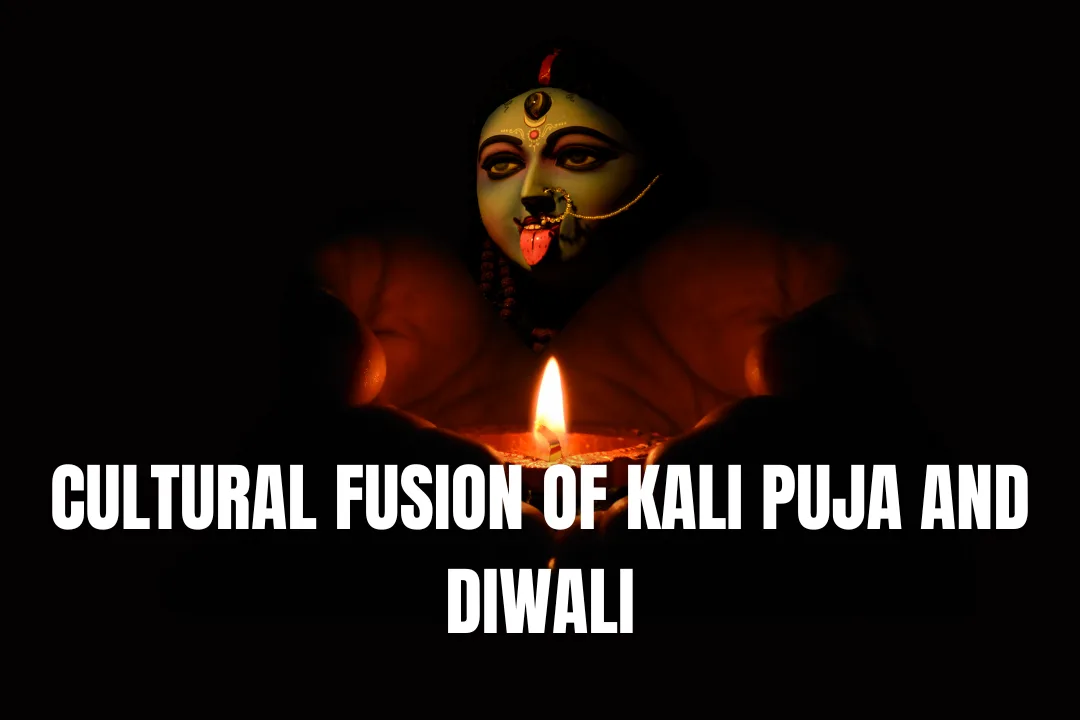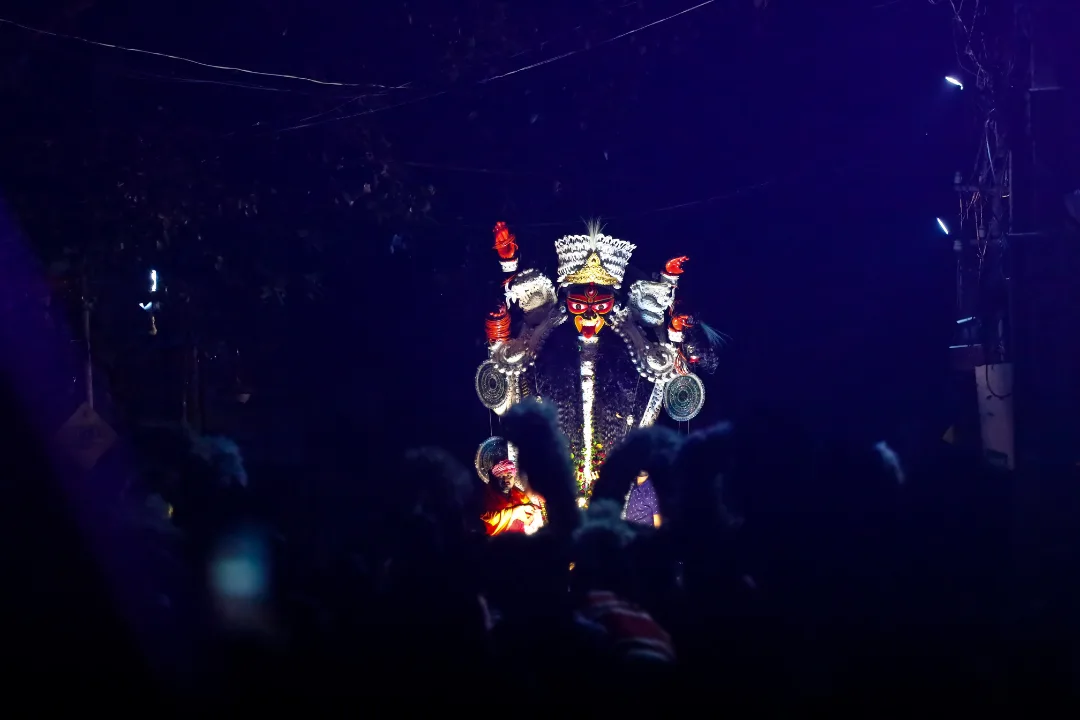Kali Puja, or Diwali, is one of the most sacred and important festivals . Diwali is generally celebrated for 5 days, and of course there is a lot of cultural diversity regarding Diwali . It is celebrated for different reasons in different parts of India, like in Northern India, where Diwali is associated with Lord Rama, the seventh incarnation of Vishnu, and in Southern India, where it is celebrated as Diwali . The day when Lord Krishna defeated the demon Narakasura and Diwali is celebrated as Kali Puja in Eastern India.
Divine confluence of Kali Puja and Diwali
Kali Puja is celebrated on the new moon day of Kartik month When the whole country celebrates Diwali, the people of Bengal celebrate Kali Puja. The name ‘Kali’ comes from the Sanskrit word ‘Kal’, which means ‘time; hence, Kali is called the goddess of time, destruction and death. Goddess Kali is one of the ten Mahavidyas and she is the supreme of all powers, the ultimate reality . Kali appears in many stories, the most famous of which is when she was born from the anger of Goddess Durga to defeat the demon Raktabeeja . Devotees believe that she destroys evil and protects the innocent. Kali is worshiped as the divine mother, mother of the universe and divine feminine energy.
Diwali is usually celebrated for 5 days and the first day of Diwali is Dhanteras, which marks the birth of Lord Dhanvantari, On the second day Naraka Chaturdashi is observed to commemorate the death of Narakasura on the third day Diwali is observed with Lakshmi Puja to commemorate the birth of Sri Mahalakshmi on the fourth day Govardhan Puja is observed in honor of Lord Shri Krishna and on the fifth day Bhai Dooj is observed a very special morning celebration between siblings.
The unknown stories behind Diwali and Kali Puja
For thousands of years, Hindus around the world have celebrated Diwali, also known as “the festival of lights.Diwali represents the triumph of light over evil and Dharma over Adharma. There are many stories behind this festival. The most common tale that is prevalent in Northern India is associated with the arrival of Ram, Lakshman, and Sita to Ayodhya from their 14-year-long exile.
Upon winning the battle against Ravana and his Lanka to free his wife Sita from abduction, Ram coroneted Visbhishana, the brother of Ravana, as the king of Lanka. When very few days were left for the exile to end, Ram was desperate to go back to Ayodhya. The reason for his restlessness was his beloved brother Bharata, who had vowed to kill himself if Ram delayed his arrival to Ayodhya even by a day after the completion of 14 years.
Ram was in a dilemma that if he returned to Ayodhya on foot, his brother would lose his life. Vibhishana, the Rakshasa King, then used his Pushpak Vimana to ensure Ram, Lakshmana and Sita reached their kingdom on time and Bharata was kept alive. Diwali Hindus as well as some sections of different religions like Buddhism, Jainism and Sikhism celebrate Diwali to mark important occasions in their experiences.
Mahavira Nirvana Divas the physical death and final nirvana of Mahavira is the reason why Jain people celebrate Diwali. The Diwali festival honors three significant moments in Sikh history: the founding of the city of Amritsar in 1577 the release of Guru Hargobind from Mughal prison and the martyrdom of Bhai Mani Singh in 1738. As a result, Diwali celebrates the victory of the sixth Guru, Guru Hargobind. Diwali is not a festival for most Buddhists, with the exception of the Newar people of Nepal, who celebrate Diwali by offering prayers to Lakshmi. In the same way that Nepalese Hindus celebrate the Diwali-Tihar festival Newar Buddhists in the Nepalese valleys also celebrate the festival for five days.
In Eastern India, Diwali is celebrated in the form of Kali puja. the special worship of Maa Kali is done on the new moon day of Diwali. Diwali is the day in the Hindu month of Karthika when the annual Hindu festival of Kali Puja is celebrated. Kali puja holds a special significance in the state of Bengal, Assam, Odisha and Tripura. it is believed that Maa Kali was born on the new moon day of Karthika. The fertility and time goddess Maa Kali is frequently invoked during natural disasters and pandemics.
Kali appears in many stories, the most famous of which is when she was born from the anger of Goddess Durga to defeat the demon Raktabeeja . It is believed that Raktabeej had the power to grow itself with every drop of blood falling on the ground so Goddess Kali, with her divine powers, drank the blood of Raktabeej and defeated him and stopped him from growing. This victory over evil is praised during Kali Puja. Devotees believe that she destroys evil and protects the innocent. Kali is worshiped as the divine mother, mother of the universe and divine feminine energy.
The Origins and Legends of Diwali and Kali Puja
The origins of Diwali can be traced to ancient India. It is probably a festival of lights that began as an important harvest festival more than 2,500 years ago, but today we celebrate it by lighting earthen lamps to commemorate the story of King Rama’s return to Ayodhya after defeating Ravana. However, there are various legends associated with the origin of Diwali and many of these stories are about the victory of good over evil.
The origins of Mahakali are rooted in various mythological and tantric Hindu texts. In the Vishnu Purana, one source of origin of Mother Kali was the churning of the ocean, and in the Shakti texts, she is portrayed as identical with Adi-Shakti, the primordial power of the universe, the ultimate reality or Brahman. The twelve manifestations of Goddess Kali are Adhya Kali Chintamani Kali Sparshamani Kali Santati Kali Siddhi Kali Dakshina Kali Rakta Kali Bhadra Kali Shamshan Kali Adhvarna Bhadra Kali Kamakala Kali Guhya Kali Hans Kali Shyama Kali and Kaalsankarshan Kali. The aspects of the goddess that each version represents and the reasons that she is worshipped differ.
The fierce form of Maa Kali is associated with her role as the destroyer of evil forces . His extended tongue can be seen as a sign of readiness to destroy negativity, ending ignorance, suffering and darkness . The festival of Kali Puja is not ancient. Kali worship was practically unknown before the 16th century; Kali puja was first started by the famous sage Krishnananda Agamvagisha. Kalika Mangalkavya, a devotional text of the late 17th century, also mentions an annual festival dedicated to Kali.
Puja muhurat of kali puja and diwali
According to the Hindu calendar, the festival of Diwali and Kali Puja are celebrated every year on the new moon day of Kartik month. Sometimes Kali Puja falls a day before Diwali but This year, Kali Puja is falling on the same day as Diwali. This year, Kali Puja will be celebrated on Thursday, 31 October.
According to the Panchang, the new moon date of Kartik month will start on October 31 at 3:52 pm. The Amavasya date of this Kartik month is ending on 1st November at 6:16 pm, so devotees will pray to her for protection from all evils outside and inside. It is also believed that by worshiping Kali on Amavasya day, a person gets freedom from troubles and sufferings.
According to experts, the auspicious time to perform the Diwali puja this year is from 6:27 pm to 8:32 pm on October 31, while the Nishita Muhurta is from 11:39 pm to 12:31 am . It is believed that on this new moon day, Goddess Lakshmi descends on earth to bless her devotees .
Feel free to share your experiences or questions in the comments below! and don’t forget to share them with friends and others who might benefit! Save Consumerviews in your bookmark for easy access, and follow our Facebook Page Consumerviews India for more articles like this.











0 Comments